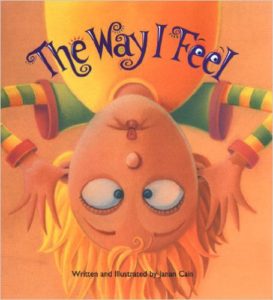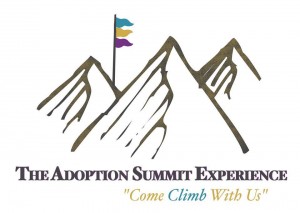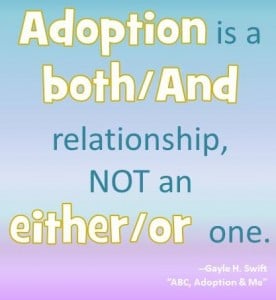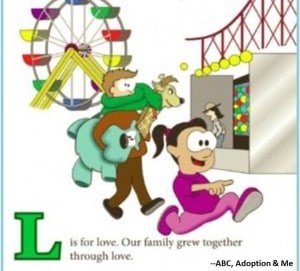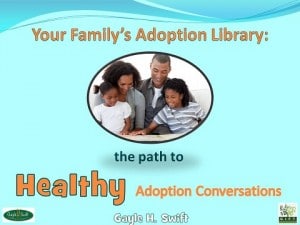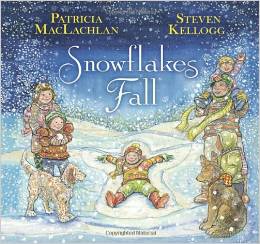Books helps kids handle grief and loss which are inevitable parts of loving others. Books that both validate the depth of a child’s feelings and ease them over life’s rough patches can help children process their powerful emotions. Their world is small, their life experiences limited, and their life skills are just beginning. They experience emotions on a grand scale: elation, terror, delight, disgust, etc. When they perceive an imminent loss, fear crushes logic. By nurturing emotional literacy in our children, we strengthen them for the journey of life.
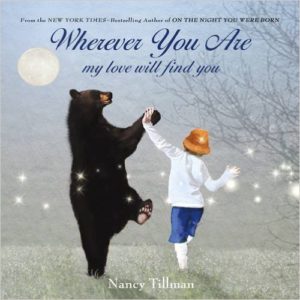 Before tackling the difficult stuff, read books which reassure children and build a firm foundation of security. Nancy Tillman, author of the NY Times Bestselling On the Night You Were Born, created a wonderful book that would be a great choices: Wherever you Are My Love Will Find You
Before tackling the difficult stuff, read books which reassure children and build a firm foundation of security. Nancy Tillman, author of the NY Times Bestselling On the Night You Were Born, created a wonderful book that would be a great choices: Wherever you Are My Love Will Find You
This sweet book reassures children that the love which connects family bridges time and distance. The delicate illustrations suit the gentle, dreamy tone well. Although it never mentions loss or death, it’s message would indirectly reassure kids who have faced the loss of a relationship, whether through divorce, death, or adoption.

Adoption-attuned Lens Adoptees have intimate knowledge of deep loss and benefit from frequent affirmations of love. This book can be interpreted as both a reinforcement of the love of their adoptive family and can lead to conversations about their birth parents as well. Adopted children have a permanent connection to and interest in their birth parents. They may find comfort in imagining their birth parents thinking about them with a love that can bridge difficult circumstances, distance and time.
Even if they came to adoption because of abuse and neglect, they may find solace in imagining some measure of positive connection with their birth parents. As always, validate the children’s feelings; if they can only conjure heart-broken, hurt or angry feelings. Empathize with how sad that must be for them. Eventually, they may be able reach resolution or forgiveness. Allow them to determine if and when that will happen.
Exuberant illustrations dance across the pages of The Way I Feel written and illustrated by Janan Cain. It walks young readers through several moods and captures the intensity of their wildest feelings. Text spirals, bends and wriggles across the page. Color reinforces the feelings being described., for example, brilliant reds and oranges for anger, blues and turquoise for sad,
The story describes kid-familiar emotions : an older sib’s jealousy, frustration, disappointment, etc. With respect and validation, it describes these feelings in ways that help kids discern the difference between one feeling and another. This helps kids develop emotional literacy– the ability to accurately recognize, clearly express how they feel and then decide how to handle them. This is a vital life skill.

Adoption-attuned Lens I began this review by stating: the proverbial Circle of Life inevitably links love, loss and grief. This is particularly true for adoptees whose lives have been uprooted from one family and grafted into another. Adoption requires kids to wrestle with very complex emotions. Having a broad vocabulary of emotions assists them in parsing out this patchwork quilt of feelings, relationships, losses and gains.
Reading a book about feelings helps convince kids that it is a permitted and welcome topic. Conversations can natural evolve from more general things to adoption-specific thoughts and experiences.
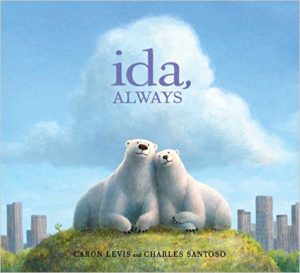 Ida, Always by Caron Levis and illustrated by Charles Santoso is a sweet, two-hankie picture book that depicts how loved one’s imprint in our world and on our hearts remains after they die. It deals with death that acknowledges the sadness and grief and celebrates life and relationships.
Ida, Always by Caron Levis and illustrated by Charles Santoso is a sweet, two-hankie picture book that depicts how loved one’s imprint in our world and on our hearts remains after they die. It deals with death that acknowledges the sadness and grief and celebrates life and relationships.
A pleasure for eye, ear and heart, Ida, Always focuses on sound to capture the loving relationship of two polar bears, the bustling zoo where they live and the vibrant city which surrounds them. (“Keys clicked and shoes clacked … buses groan,; trucks rumble …children laugh.” This encapsulates the theme: even when the people and places we love are out of sight, the sounds that surround us hold the audio track of precious memories.

Adoption-attuned Lens Adoptees may find solace in a book like this because it invites them to intentionally search for and preserve good memories about relationships they have lost. Even when they lack actual memories, parents can help them imagine moments that his birth parents “might” have shared with them. Even kids with trauma histories are viscerally connected to their birth parents. They might benefit from finding some positive recollections, (Not to cancel out or invalidate any trauma or the reality of hurtful histories but as the first step to finding a way to heal any damage.)
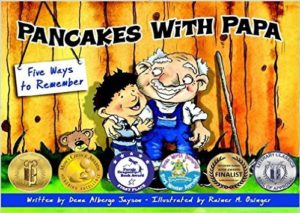 The multi-award-winning book Pancakes with Papa by Dena Albergo Jason and illustrated by Rainer M. Osinger directly addresses a child’s loss of a grandparent. Johnny’s grandparents live with his family. They spend time together and have shared many memory-making moments. So, when his beloved Papa dies, his death leaves a large hole in Johnny’s life. His Nana brings Johnny around the house. She helps Johnny identify smells, sounds and memories of their time together. He learns to use these memories to trigger warm feelings that help ease his grief.
The multi-award-winning book Pancakes with Papa by Dena Albergo Jason and illustrated by Rainer M. Osinger directly addresses a child’s loss of a grandparent. Johnny’s grandparents live with his family. They spend time together and have shared many memory-making moments. So, when his beloved Papa dies, his death leaves a large hole in Johnny’s life. His Nana brings Johnny around the house. She helps Johnny identify smells, sounds and memories of their time together. He learns to use these memories to trigger warm feelings that help ease his grief.

Adoption-attuned Lens While everyone needs help coping with loss and grief, adoptees have a heavier load to shoulder than most kids their age. Whether they were adopted as infants or older, children may benefit from finding ways to see, hear, and smell the connection of lost relationships. Especially for adoptees with little information in their files, the exercise may rely more on supposition than fact. nonetheless, kids may find comfort in remembering or imagining magical, loving moments with people from their pre-adoptive lives.


